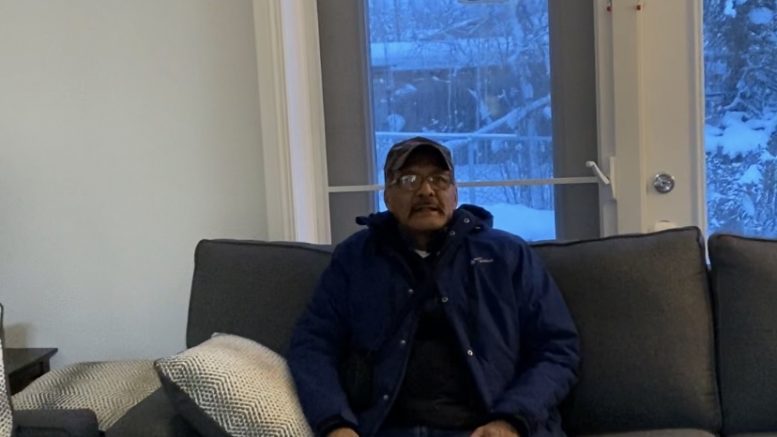The first transitional men’s shelter in Fort Good Hope has officially begun housing clients.
The four bedroom Kádúyíle Home for men was created to help address issues of homelessness and overcrowding in the community of about 500.
Arthur Tobac is one of the heads of the project established by the K’asho Got’ine Housing Society.
“Providing a facility like this, I think it will go a long way in getting some of our people back into good, productive lives,” he says.
Tobac says when food and shelter are taken care of for those in need, the clients can begin improving other aspects of their life.
“You can’t go to school when you don’t have a place to call home,” he explains.
A long time coming
Fort Good Hope has been working to establish a shelter since 2016 when a representative from Indigenous Services Canada approached the community.
Tobac says the federal government was hoping to establish more shelters in northern communities.
The project received funding from both the federal and territorial government to help with the renovation process.
But the planning and organizing was completed by the band council, the Yamoga Land Corporation, as well as Plan It North, a Yellowknife-based planning and research organization.
“It’s been a huge endeavour on our part, for the community,” Tobac says.
After some more fundraising, the renovations began, which required contractors for the electrical and mechanical work. But the work was forced to pause last year.
“We we’re going on pretty good until last year COVID hit and that slowed down everything,” he said.
The work resumed in the fall and the structure was nearly completed by December.
Client criteria and programming
As renovations were completed, a committee was established to create the criteria for potential clients.
This committee includes workers from the health center, the RCMP, the local church lay person, wellness workers from the band office and probation officers.
One of the criteria requirements is that potential clients must submit a personal development plan, detailing how they will improve their life.
“One thing that really struck me was that a lot of the people that are experiencing homelessness are younger,” Tobac says. “They need help if they’re going to help themselves.”
The plan can involve education or employment, as well as addiction recovery treatment.
The facility employs several supervisors and a coordinator who provide support to the clients.
But not only are the clients receiving support at the shelter, the community has launched other wellness initiatives.
This includes an on-the-land program; Tobac says one is currently in progress by Rabbitskin crossing.
“When the entire community starts working together towards wellness, it goes to show that our leaders have a vision for our people and it includes being healthy working towards productive, rewarding lives,” he says. “I like being part of it.”
Anyone in need of more information can contact the K’asho Got’ine Housing Society.





